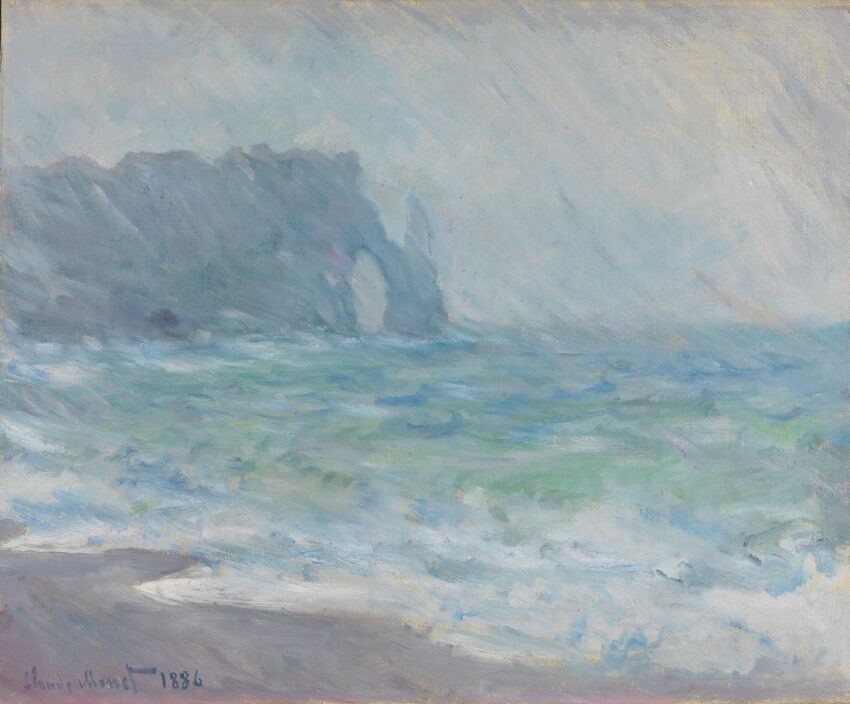I don’t know about you, but when I think of Étretat, the first thing that comes to mind are the gorgeous impressionist paintings of Monet. Maybe it’s just the art historian in me, but I have longed to visit ever since I became aware of its existence.
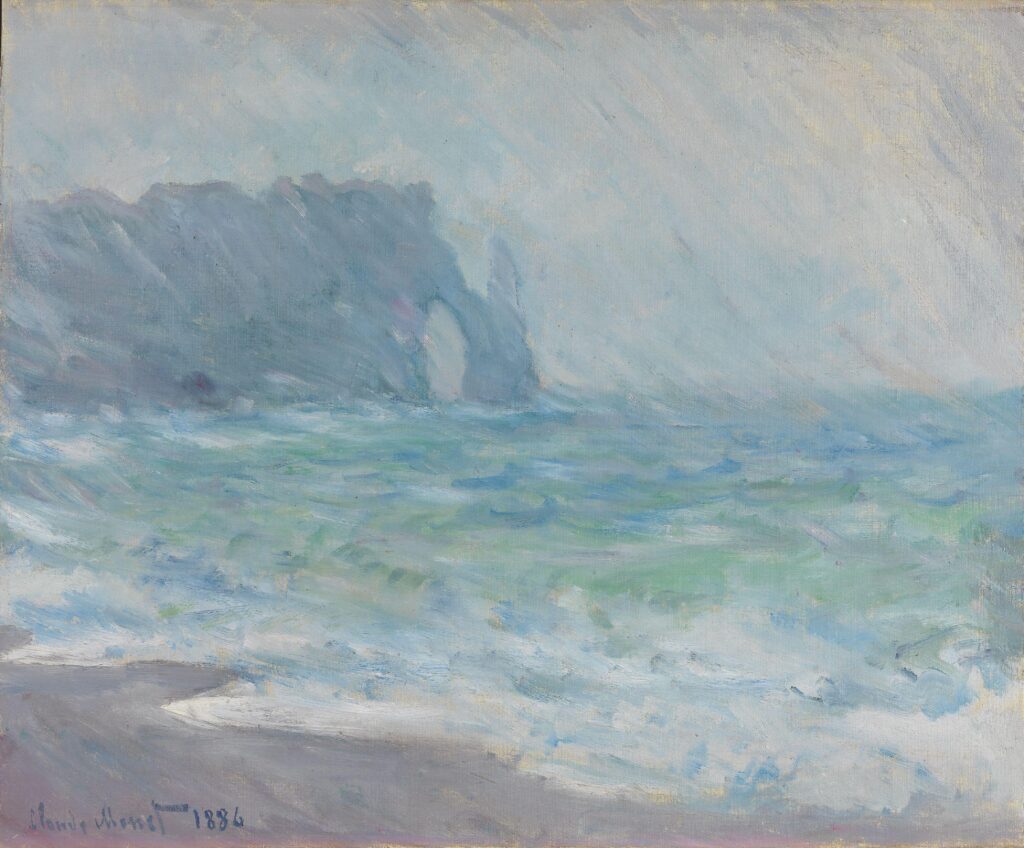
After living in France for nearly two years, I was finally able to visit! To celebrate our second year of marriage, my husband and I took a long weekend on the Alabaster Coast. Our anniversary is the 27th of July, leading our trip to fall around prime tourist season. Luckily, we found a fantastic detached studio (which is literally 30 meters from the beach) to rent for the weekend.
I am so happy we went; it was worth the wait! It is everything that I imagined it would be!
A Little Bit of History
Before traveling to Étretat, I had really no idea about its history. The only thing I knew was Monet painted there. As it turns out, Étretat is known for a whole hell of a lot more than Monet, and has been an important factor in French history and culture for centuries.
The First Traces
According to archaeological findings, occupation of the site dates back to antiquity; however, there is evidence of human activity since prehistoric times.
The Gauls first occupied the territory on the heights of the Falaise d’Amont where they established farmland along with a fishing port. Transitioning into Gallo-Romans, they developed a network of paved roads connecting Étretat to all the cities of Normandy. In the 3rd century, their city fell victim to Anglo-Saxons who destroyed and plundered it. It was then transferred to the Franks around 486.
10th & 19th Centuries



In the 10th century, the village fell under the authority of the Dukes of Normandy before coming under the authority of the Abbey of Fécamp. The Abbey established hermitages outside the village, including a church and several farms.
From the early 1800s, tourism slowly replaced the fishing economy. At this time, industrialists, bankers, rich merchants, artists and journalists from Paris and England flocked to the sleepy village.
The painter Eugène Isabey is credited with “discovering” Étretat in 1820. He focused his works on storms, shipwrecks and cliffsides. He also introduced several of his friends to the village, notably Eugène Lepoittevin who built his own studio to study the sea. Sea bathing, a practice deemed to be of therapeutic value, marked Normandy by the 1840s causing an influx of tourists. By 1860, Étretat was in its golden age. Development of waterfront hotels, casinos and private residences was booming.
The 20th Century
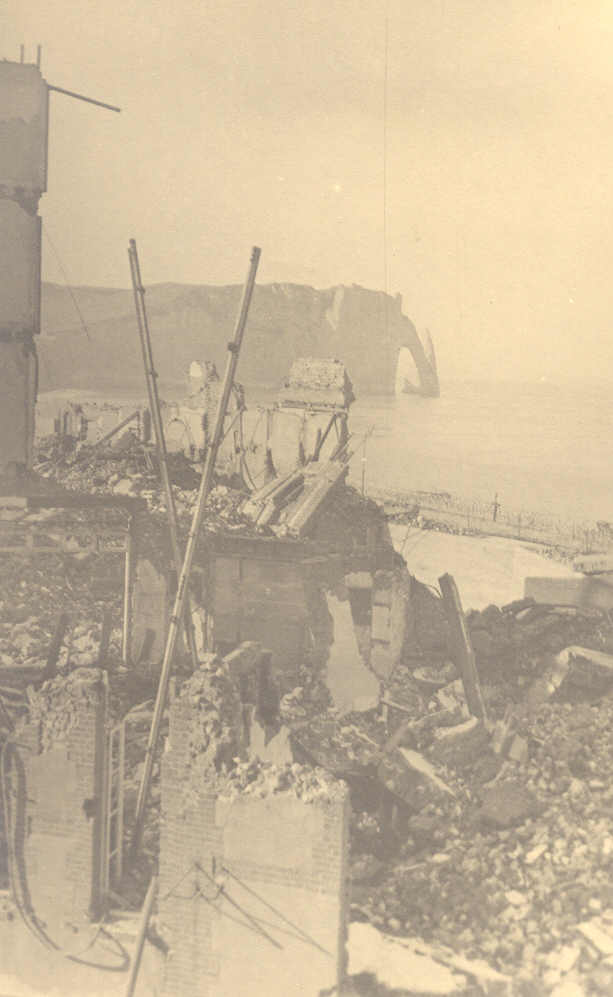

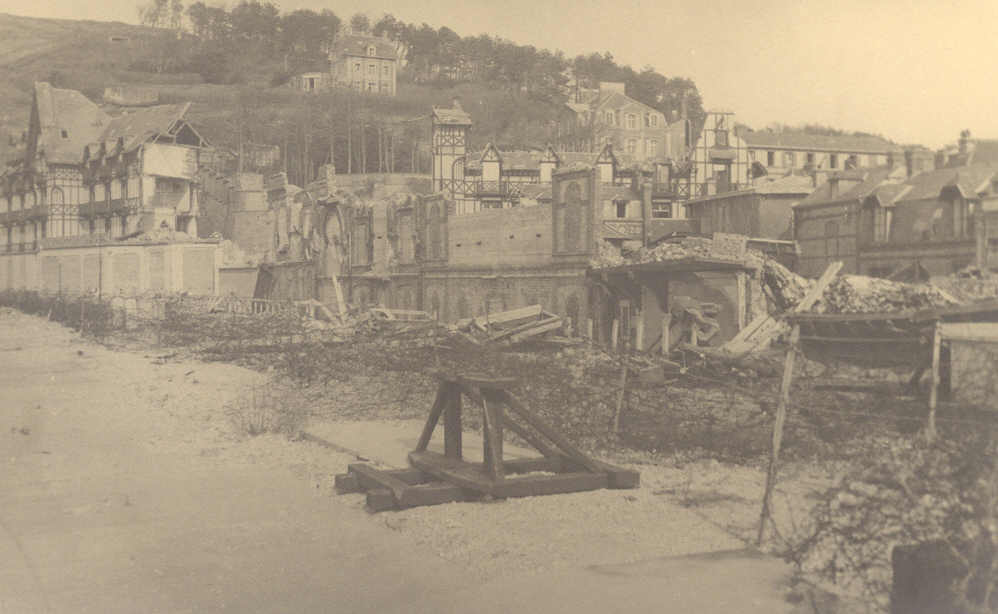

During the First World War, Etretat became the No. 1 General Hospital of the British and Commonwealth armies and the No. 2 Base Hospital Unit of the American army. However, it is in WWII that the town sustained the most damage.
German occupiers completely demolished and mutilated parts of the seafront. The casino and nearby villas, along with some of the Falaise d’Amont itself, were the subject of tactical destruction in order to improve the defense of the site. Other villas along the coast were occupied and pillaged.
Impact of WWII is still visible today, whether it be the blockhouses in the cliffside, physical impacts to the cliffs, or discoveries of artillery shells on the beach.
Things to See & Do
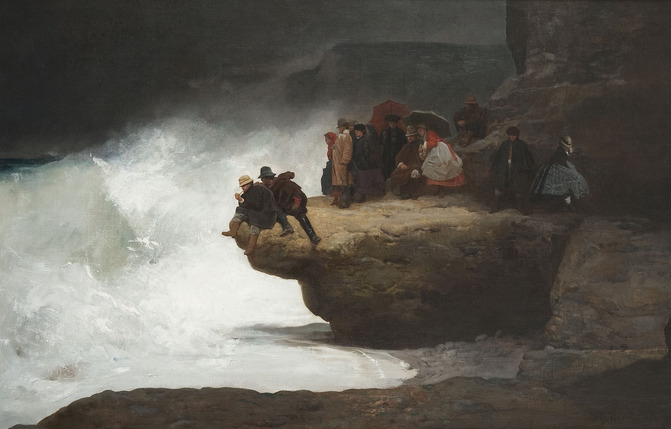
The Beach and its Galets
If you haven’t guessed it yet, going to the beach is one of the main things in Étretat. But prepare yourself, the beach is covered in “galets” (pebbles), not sand. These galets are protected, and it is forbidden to take them from the beach. Why are they so special? They are the only thing keeping the waves from causing massive flooding and destruction to the town during storms; they are a natural barrier between the water and the town, and cause the waves to break up before they go further than the beach.
Look at this crazy storm from January 3rd, 2018:
The Église Notre-Dame de l’Assomption
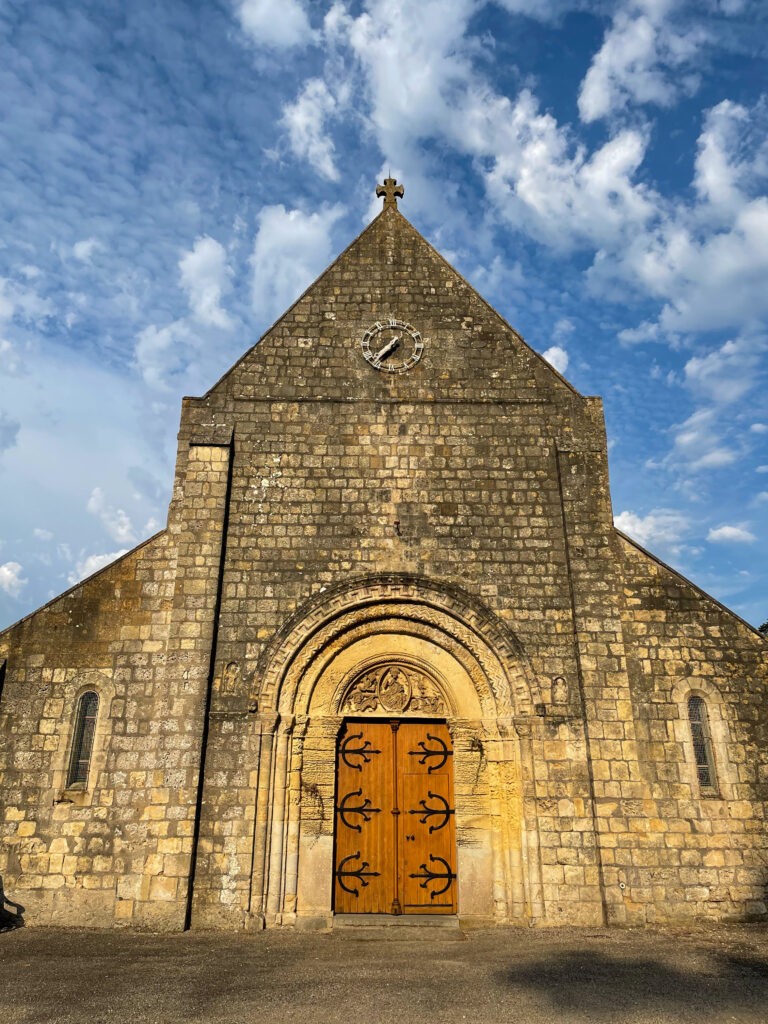
Dating from the 11th and 13th centuries, the “Romanesque Church” is a gem tucked away from most tourists. Built in the image of the Abbey of Fécamp in the 11th century, this church was a dependency. Enlarged in the 13th century, it took a cruciform shape according to gothic aesthetic. Classified as a Monument Historique in 1840, and embellished with 19th century stained-glass windows, it is worth a visit.
Two Things You Must Do:
Watch the Sunrise



It’s 6 am, people calmly fish while seagulls fly overhead. Behind are the white cliffs and a spectacular sunrise. If you want to experience Etretat at its best, get up and get over to the beach for sunrise. There are very few people and even fewer tourists, you will be able to enjoy some tranquility before the influx of tourists arrive. You can even climb the Falaise d’Aval for a great sunrise view.
Go Kayaking
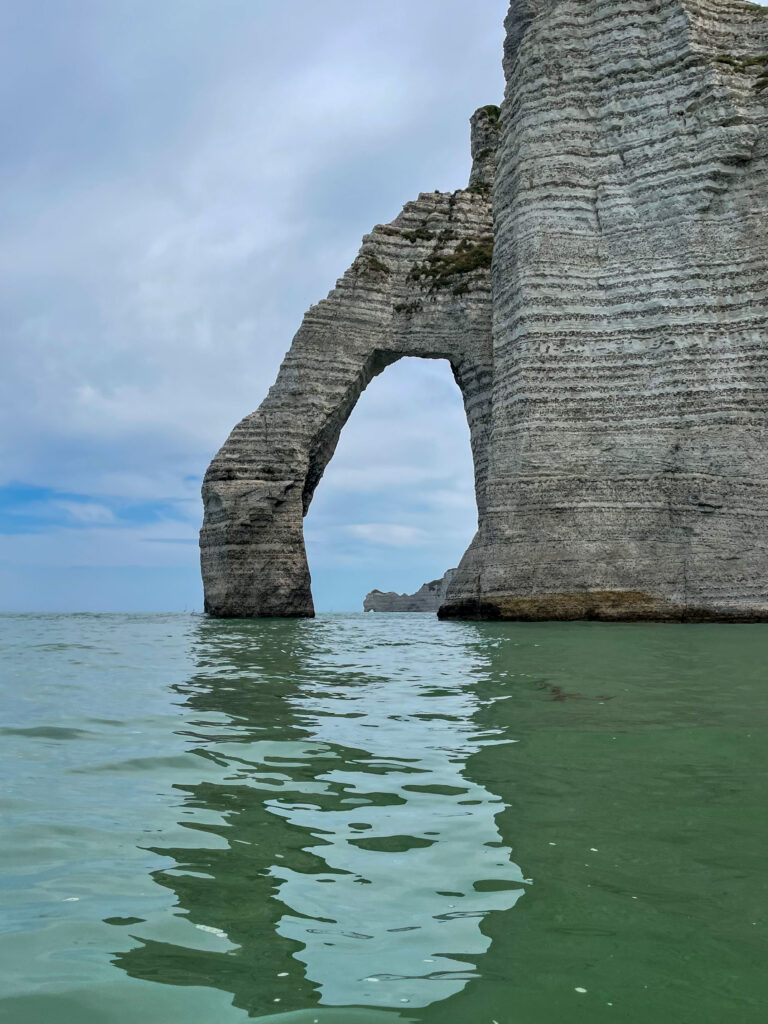

You’ve seen the arch from the beach, you’ve seen it from the cliffs, and now it is time to see it from the water!
With your kayak, take a trip through the two arches on the Falaise d’Aval and, weather permitting, even make a little stop on one of the beaches accessible only by water transport. To take a trip through the arches, head over to Voiles et Galets d’Étretat, who have a rental area along the beach. It takes about an hour round-trip for the two arches with time for photographs and for admiration. Rentals start at 15€/1 hour for a single and 30€/1 hour for a double.
Les Falaises



For the best sea views, don’t forget to pack your walking shoes!
Étretat has one of France’s best spots for hiking, where you can discover the beauty of the Alabaster Coast along a 194km (121mi) coastal trail. There are two main cliffs (Aval and Amont) and each has their own particularity.
On the Falaise d’Amont
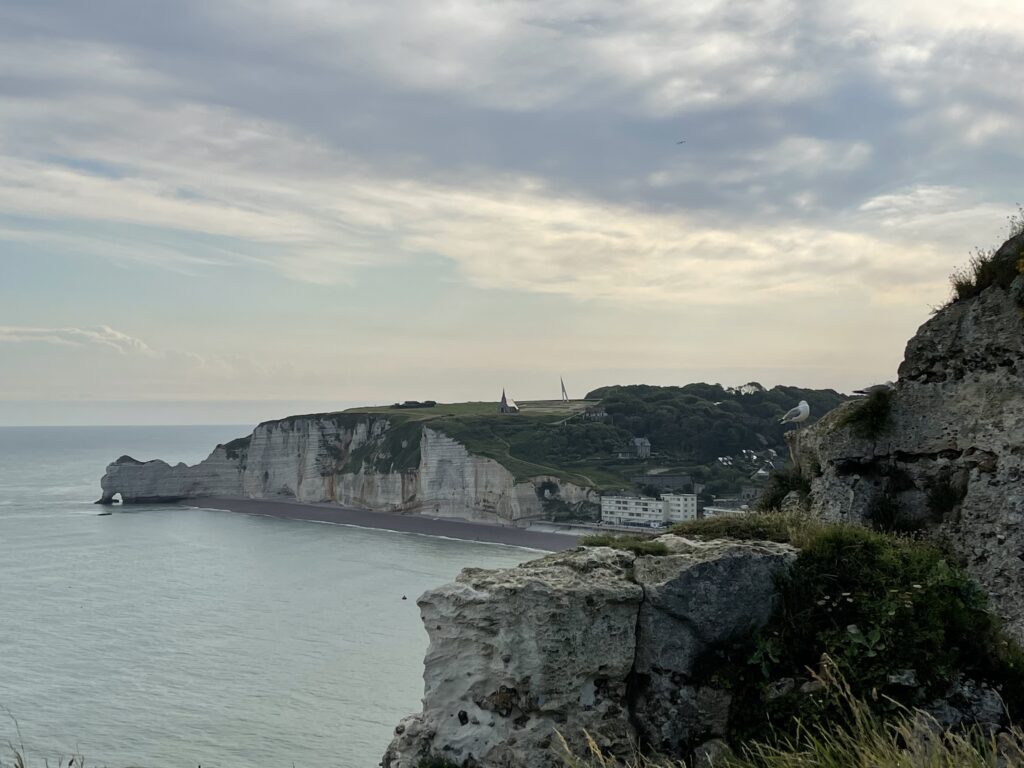
To get to the top of the Falaise d’Amont, you can either walk or take Le Petit Train d’Étretat from the covered market. Either way, you will be greeted with beautiful sights and lots of different activities. If you plan to spend the day here, it’s best to bring your lunch as there is only a food truck upon the hill.
Here are the things to visit:
Notre-Dame de la Garde


When looking from the beach, it is hard to miss the spire of this little chapel atop the cliff.
This chapel is a 1950 reconstruction of the “Chapelle des Marins” (Sailor’s Chapel) edified in 1856. The original chapel, built for the fishermen and sailors, was regrettably destroyed by German occupiers in 1942 who also destroyed the obelisk of the Nungesser and Coli monument.
Note its bizarre and hilarious fish-shaped gutters. The chapel is not open to the public.
Musée du Patrimoine d’Étretat
This small museum is packed with information about the history of Étretat. They have original objects, documents and photographs which aid immensely in comprehending Étretat’s place and importance throughout time. From prehistory to its advent as a “station baignaire,” a muse for many artists, and a key transfer station during WWII, Étretat has seen some shit. The museum also aids in better understanding the importance of Nungesser and Coli (WWI war heroes attempting to make the first non-stop flight from Paris to New York City) whose monuments embellish this cliff. Most of the information in the museum is available in English.
Entry is a small 3€ and is free for those under 14; they are open from April to mid-September at these hours.
Jardins d’Étretat
Perfect for that photo op, the Gardens of Étretat are well-manicured and picturesque gardens peppered with modern sculptures. This wasn’t really our thing to start with, and after seeing the entry price at over 10€ per person, my husband and I decided against. You can check out their website for opening information and tickets here.
Instead, we took our lunch to Les Roches, a park just down the hill.
Leisure Park “Les Roches”
This park is not for those looking for chic tailored gardens, an uninterrupted view of the water, or a photo op. Instead, it is a free, family-friendly place perfect to stop for some amusement and have your lunch. Here, you will find numerous picnic tables, an outdoor play area for children, a wading pool, and mini golf! The park is open from spring vacation until All Saint’s Day from 10AM to 7PM.
Where to Eat
Restaurants in Étretat are expensive. There, I said it!
Not just the seafood (which is typically fresh and scrumptious), every other thing on the menu is equally high priced. Obviously, this is because of tourism, and because you are paying for that seafront view in many restaurants. Even in the little streets without a view, the prices are, quite frankly, exorbitant.
For our first night out, my husband and I decided to treat ourselves and we fell upon the adorable Manoir de la Salamandre. Unfortunately, the house is better than the food or the service. Don’t waste your time, but do go look at the magnificent house!
Cheap & On the Go
To save some cash and keep your day going smooth, head over to the bakery “Le Petit Accent” where you can get a sandwich, dessert and drink menu from 9AM. They are open 7AM-7PM seven days a week, and have a large variety of sandwiches, desserts and pastries. My husband and I got pastries there each morning as well as a sandwich for lunch on Friday and Saturday and we have no complaints!
Must Go: Crêperie le Lann-Bihouhé


If you are looking for somewhere inexpensive, freakin’ delicious, reasonably priced, and do not mind waiting in line, Le Lann-Bihoué is THE place to go.
They do not take reservations, they are THAT good.
People begin lining up for entry 20 minutes before they open, they are THAT good.
My husband and I went there three times, they are THAT good.
Whether you go for lunch or dinner, be sure to get there about 20 minutes before the start of service (e.g., 12 for lunch and 7 for dinner). If not, you will have to come back around 1/8PM for their second service and still wait in line. Be sure to come hungry, their galettes and crêpes are extremely filling!
Conclusions
My husband and I had a fantastic weekend away in Étretat. It was just as picturesque as all the Monet paintings, and the cliffs in real life are so impressive! I am so glad that I got to tick one of my “must-do’s” off the list. Honestly, we would love to go back again and continue the discovery (alas, there are too many other places in France calling our name…).
I hope you have enjoyed learning a little bit about Étretat and will give some of these recommendations a try on your next trip. Let me know how it goes!
Bisous,
Rose

